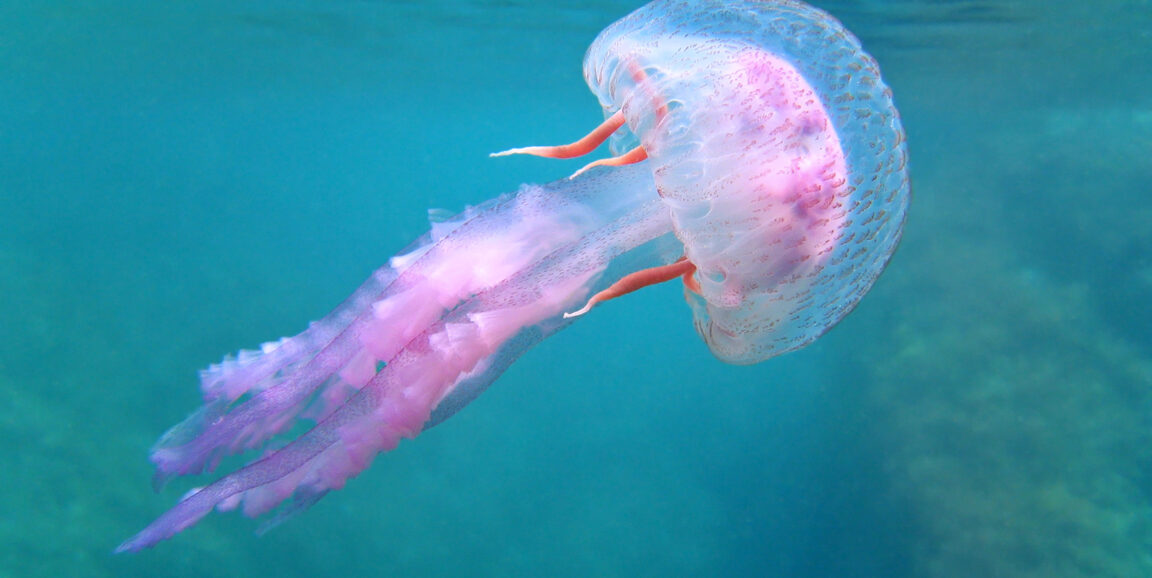Paul Auerbach, MD was swimming off the coast of Maui during a break from Stanford's Emergency Medicine symposium when he felt stinging on his wrist and forearm. As a founder of the Wilderness Medical Society and consultant to the Divers Alert Network, Auerbach knew immediately that he had been stung by jellyfish. It would be an understatement to say it wasn't the first time.
Auerbach, an emeritus professor with Stanford's Department of Emergency Medicine, is considered by many to be the founder of the wilderness medicine specialty, and while he rarely sees jellyfish-related injuries in Stanford's Marc and Laura Andreessen Emergency Department, he is frequently consulted by individuals from around the globe about treatment options for the injury. I spoke with him about his recent case study on a presumed box jellyfish sting, and his general interest in the field.
"When we first conceptualized the specialty of wilderness medicine, I was most interested in dive medicine and aquatic recreation," Auerbach explained. "I was a diver and had been stung many times myself. I wasn't an expert at the time, but saw a need for rational and effective, evidence- and experience-based treatment for jellyfish stings and other marine animal envenomations and attacks. The literature was sparse and there were only a few American experts, so I learned what I could."
Jellyfish are found in oceans of all temperatures and in some locations, there are seasons and conditions when jellyfish are known to be more abundant. In 2018, warm weather and tides brought an increase in jellyfish to Florida beaches, resulting in nearly 600 people suffering stings in one weekend. An estimated 150 million people globally are stung by jellyfish each year.
While the majority of stings in North American coastal waters cause relatively mild reactions (unless there is an allergic reaction), the box jellyfish (such as Chironex fleckeri) found in Indo-Pacific waters are significantly more worrisome.
As described in Auerbach's case study, the victim of a box-type jellyfish sting might experience profound skin wounds and scarring. Sometimes the sting leads to major systemic symptoms. According to the report, "In severe cases, cardiovascular collapse and death can occur within minutes."
"There are many toxins and bioactive compounds present in marine animal secretions and venoms," Auerbach said. "Some of these are like snake venom, which evolved to capture and subdue prey. Others are defensive. They can affect virtually any organ -- skin, heart, nerves, etc. They produce a wide variety of symptoms including pain, abnormal heart rhythms, severe allergic reaction, local tissue destruction, paralysis, and so forth. What happens with any particular envenomation depends on the specific creature, its toxins, and delivery method."
If you decide to enter jellyfish-infested waters, there are precautions you can take, according to Auerbach: Be informed -- speak with the lifeguards or park rangers about current conditions. Obey posted warnings. Wear a dive skin or wetsuit and use a topical jellyfish sting prevention lotion. But always be aware that these provisions offer no guarantees.
If you are stung, treatment varies according to the jellyfish species.
"Different jellyfish respond to different topical treatments," explained Auerbach. "In general, most respond to topical application of household vinegar, lidocaine, and/or non-scalding hot water, but this is not absolute. Do not rinse the skin with fresh water or apply ice directly to the skin, as these might worsen the envenomation. Urinating on a jellyfish sting, or any other marine, sting has never been proved effective."
Additionally, if the victim has a large area involved (an entire arm or leg, face, or genitals), is very young or very old, or shows signs of generalized illness (nausea, vomiting, weakness, shortness of breath, chest pain, and the like), seek help from a doctor. Additional treatment options and details can be found in Auerbach's book "Medicine for the Outdoors."
Researchers are still working to understand more about jellyfish stings -- in particular, they want to know how properties of the stinging cells relate to human skin reactions, Auerbach said.
Asked if his recent experience in Maui would deter him from future aquatic forays, Auerbach responded: "Of course not. But I'm reminded once again to never be lulled into a false sense of security. It just takes one sting to ruin a vacation."
Photo by damedias






